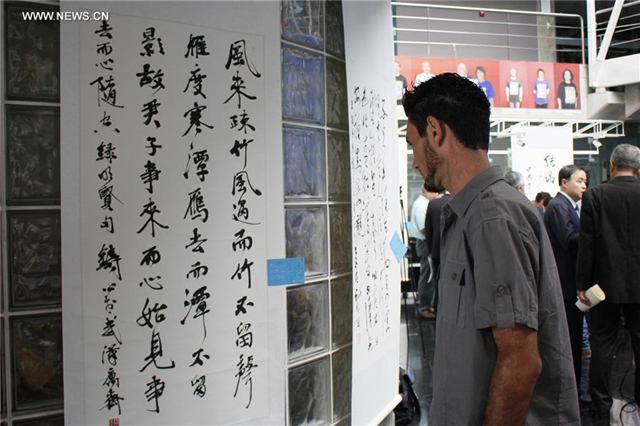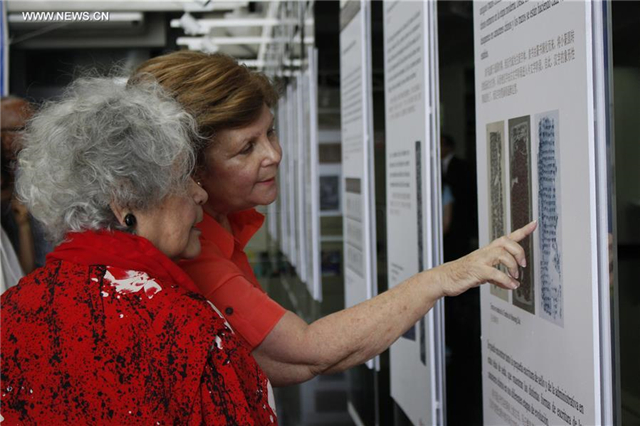Residents visit the exhibition of Chinese calligraphy and characters at the National Library of Peru in Lima, capital of Peru, on Jan. 9, 2017. The show has toured over 20 countries and regions since its inception in 2013 by China to serve as a platform for cultural exchange and promotion. (Xinhua/Luis Camacho)
The evolution of China's unique and complex writing system went on show this week at Peru's National Library here, attracting locals' attention and interest.
The traveling exhibition, which has visited more than 15 countries so far, traces the origins of China's extensive "alphabet," which includes thousands of characters, dating back to its earliest manifestations as Bronze Age inscriptions that were carved on bones or turtle shells.
More than 50 descriptive panels also feature China's varied writing styles, including artistic calligraphy on silk, paper and woven bamboo.
"In recent years, as friendly ties between China and Peru have grown, so has the desire in Peru to learn the Chinese language," Zhu Xiaoyan, a cultural attache in the Chinese embassy to Peru, said at the opening on Monday.
Also on hand was famed Chinese calligrapher Feng Kejian, who is also the permanent deputy director of the National Museum of Chinese Writing in Anyang, one of the eight ancient capitals of China and where historic oracle bones were discovered.
"Writing is humanity's greatest invention and Chinese characters are living fossils of human civilization, a common heritage of humanity," said Feng.
Peru's Deputy Minister of Culture Ana Castillo noted that economic relations between Peru and China were strong enough to inspire greater mutual curiosity and closer cultural ties.
"The inauguration of this traveling exhibit offers us a chance to strengthen the fraternal feelings" between the two peoples, said Castillo.
Castillo said the exhibition highlighted the fact that writing "in China is more than just spelling, it is also an art. That is what we Peruvians endlessly and deeply admire."
The opening ceremony featured demonstrations of Chinese calligraphy on rice paper with ink and brush, through which visitors could get a firsthand look at how characters are composed of varied strokes.
Alejandro Garcia, a student, said: "I find the different Chinese characters they have demonstrated interesting. It's important that they have shown us the history of the Chinese language, one of the six official languages used at the United Nations."
"It is very important to have these cultural and educational exchanges between China and Peru," he added.
Since its inception in 2013, the exhibition has traveled to Canada, the United States, Germany, France, Russia, India, Japan and other countries.

A residents visits the exhibition of Chinese calligraphy and characters at the National Library of Peru in Lima, capital of Peru, on Jan. 9, 2017. The show has toured over 20 countries and regions since its inception in 2013 by China to serve as a platform for cultural exchange and promotion. (Xinhua/Luis Camacho)

















